What’s On The Rise And Slide In Culture In June?
Welcome to Culture Curve—your go-to guide to what’s on the rise and slide in June 2020.
As Australia emerges from isolation, a new mood is in the air. There’s hope—our hoods, our cities and our regions have a new appeal, and not just because international borders are closed. We’ve also embraced a slower, more grateful way of living, and it’s easy as she goes as we gently try to revive and re-enter this post-’Rona space.
Though in the face of this gentle resurfacing, there is also a rising unrest. The unshakably powerful and important George Floyd and Black Lives Matter protests are revealing a major culture shift—one that can’t be ignored, misunderstood or overlooked.
Here’s what’s on the rise, and on the slide, this month.
Beyond The Black Squares: First Nations Lives Matter Neighbourhoodism Is The New Australian Made Astrotourism Is In The Stars The Deal With Dopamine Fasting Working Weeks Get Woke Traditional Classrooms — School’s Out Calm Content Vs Brand Noise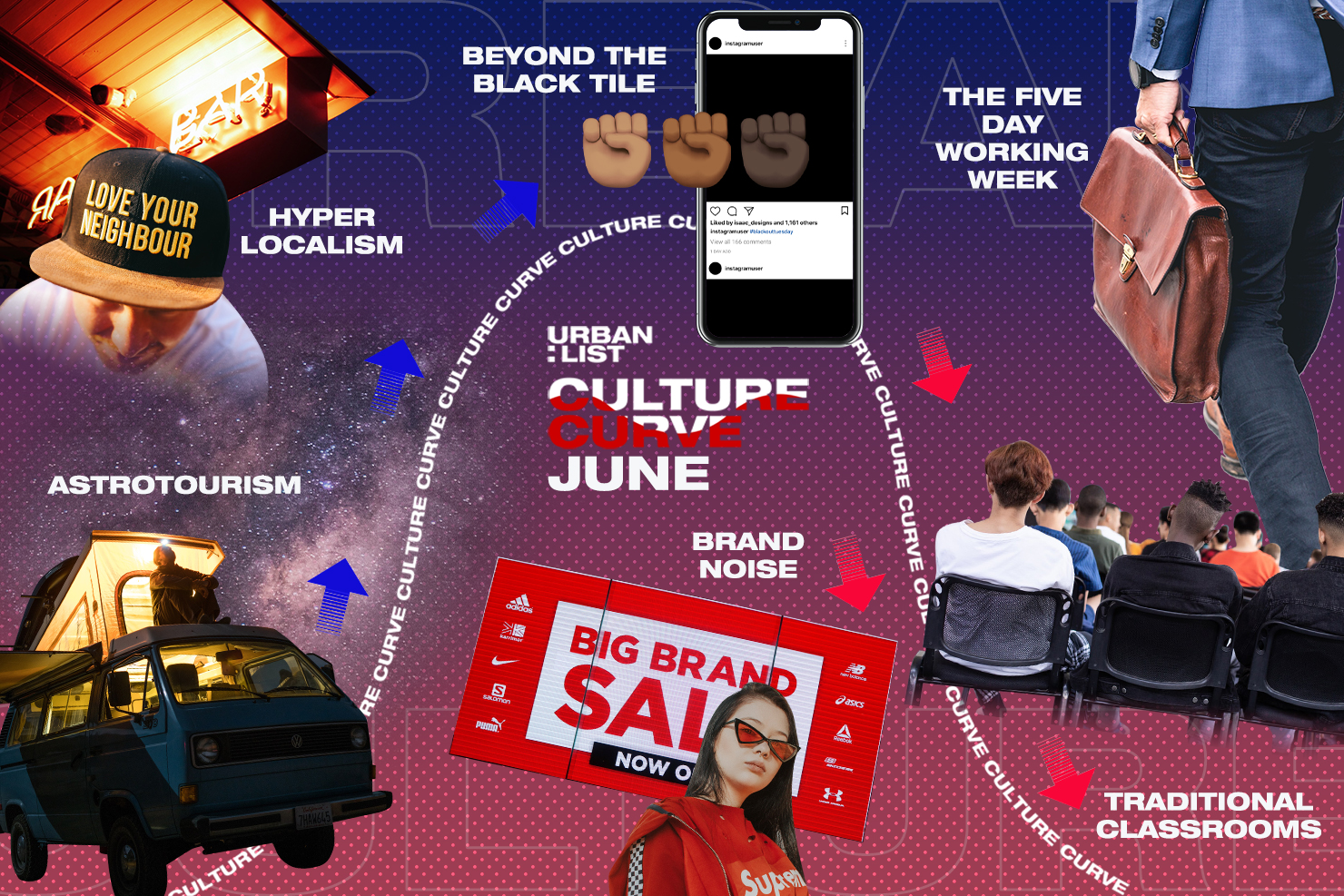
On The Rise
Beyond The Black Squares: First Nations Lives Matter
The George Floyd and Black Lives Matter protests in the U.S have sent shockwaves around the world. On Tuesday 2 June, hundreds of thousands posted black squares to Instagram as a show of solidarity for the movement and the end to historic, systemic,and deeply rooted racism. Visually stirring as it was for anyone scrolling through their Feed —it was divisive and polarising.
Spokespeople for BLM felt the black squares were flooding out important information and hiding resources shared under the #blacklivesmatter hashtag. Others called it out as “slacktivism”—a term now recognised by the United Nations that describes a social media phenomenon based in passive, low-effort posts centred on major social issues and world tragedies without ever taking real action, only to disengage with the issue moments later (we discuss slacktivism here).
It’s also been labelled “performative activism” or “performative allyship”—the idea that this sudden influx in solidarity is related more closely to Instagram’s perform (post) and reward (likes and comments) system.
In Australia, a new light has been cast on similar and the same wrongs that have happened and are happening in our own backyard. There have been 432 known cases of Indigenous deaths in custody since 1991. Some statistics paint an even worse picture than that of the States: Indigenous Australians are locked up at four times the rate of African Americans, for example.
Brands’ accountability in this space is at an all-time high. Messages of general support won’t cut it—brands like Aesop, Cotton On and The Iconic, taking the time to ask themselves where they truly stand and where they have failed, are being met with respect. Offering space for change is a first step—like Sydney’s FBi Radio, who have dedicated air time to First Nations artists. If we want to think of each of 2020’s turbulent trials as an opportunity to reset and rethink what really matters to us—this is the next big urgent change that needs to be addressed. Solidarity is the beginning; education, action and real change is what’s next.
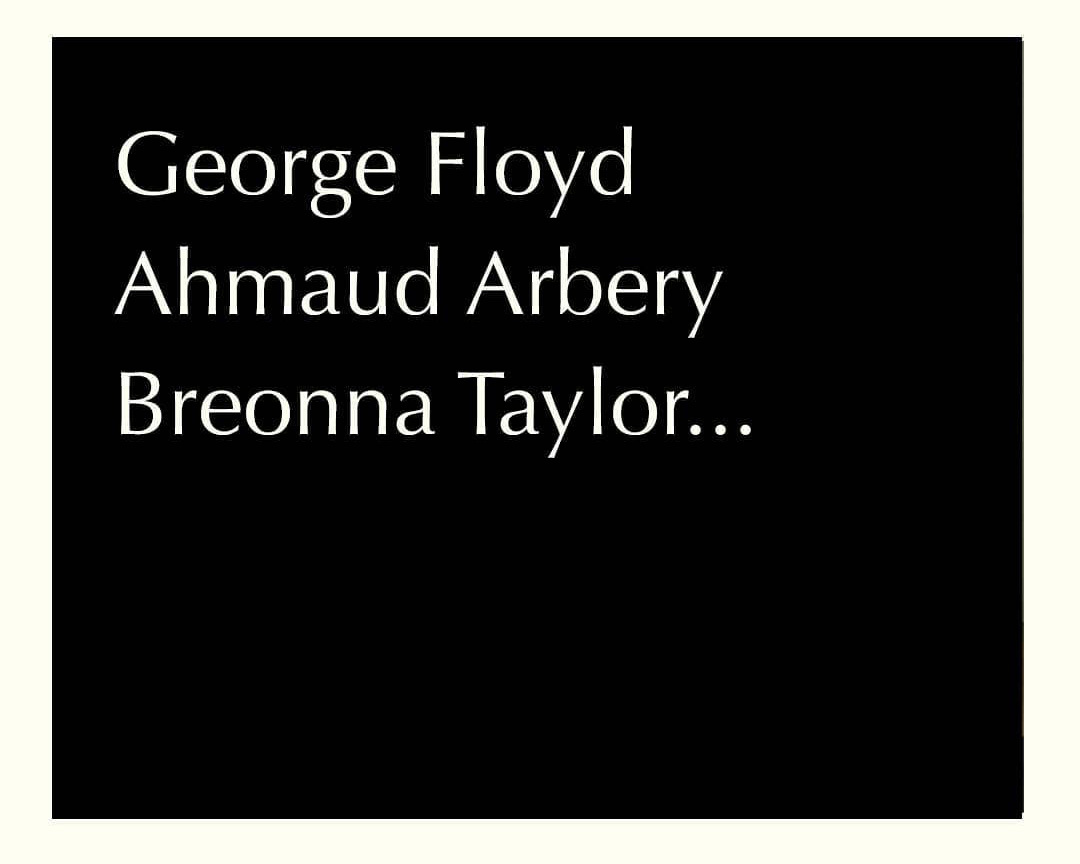
Neighbourhoodism Is The New Australian Made
2 in 3 Australians agree their definition of the term ‘local’ has changed over the last three months; narrowing its scope from meaning “Australian” to being from my community, my neighbourhood.* The now-iconic “True Blue” campaign (which has very recently been revived) encouraged a generation of Aussies to shop Australian made—but the new mood emerging is a cut or two deeper: my state, my city, my suburb. And while there’s absolutely an element of safety in not straying too far, there’s also curiosity and civil goodwill in the mix here too. As we step outside of hibernation, hyper localism has arrived.
Aside from the obvious obstructions to international and interstate travel and global supply chains—this is a pretty remarkable consumer shift.
Aussies are a nation of avid globetrotters. However, after drought and bushfire devastation, a pandemic and being confined to our homes indefinitely, it’s as if we’re seeing our backyard in all its natural splendour for the very first time. As news of regional travel restrictions easing swept the country in May, Urban List’s travel vertical saw a 2.5x increase in traffic compared to April—1.6 million searches for local escapes (off-grid adventures, national park guides, glamping, tiny cabins, pristine beaches, islands and forgotten regional towns).
But it’s not just our travel habits that are getting all neighbourly. 94% of Aussies say it’s more important than ever to support Australian business. We want to meet, connect with and support the businesses, brands and experiences next door, down the road or a short drive away. Instagram initiatives like Empty Esky, Stay In The Bush and Spend With Them, founded in 2019’s vivid environmental turmoil, now have a deeper sense of relevance. State and regional travel boards are understandably diving deep on this burgeoning “backyard pride”.
And U:L released an exclusive set of IG gifs to celebrate our local legends, available on the ‘Gram by searching “urban list”.
*Urban List IsoNATION Survey, N = 5,860, 19 MAY 2020.
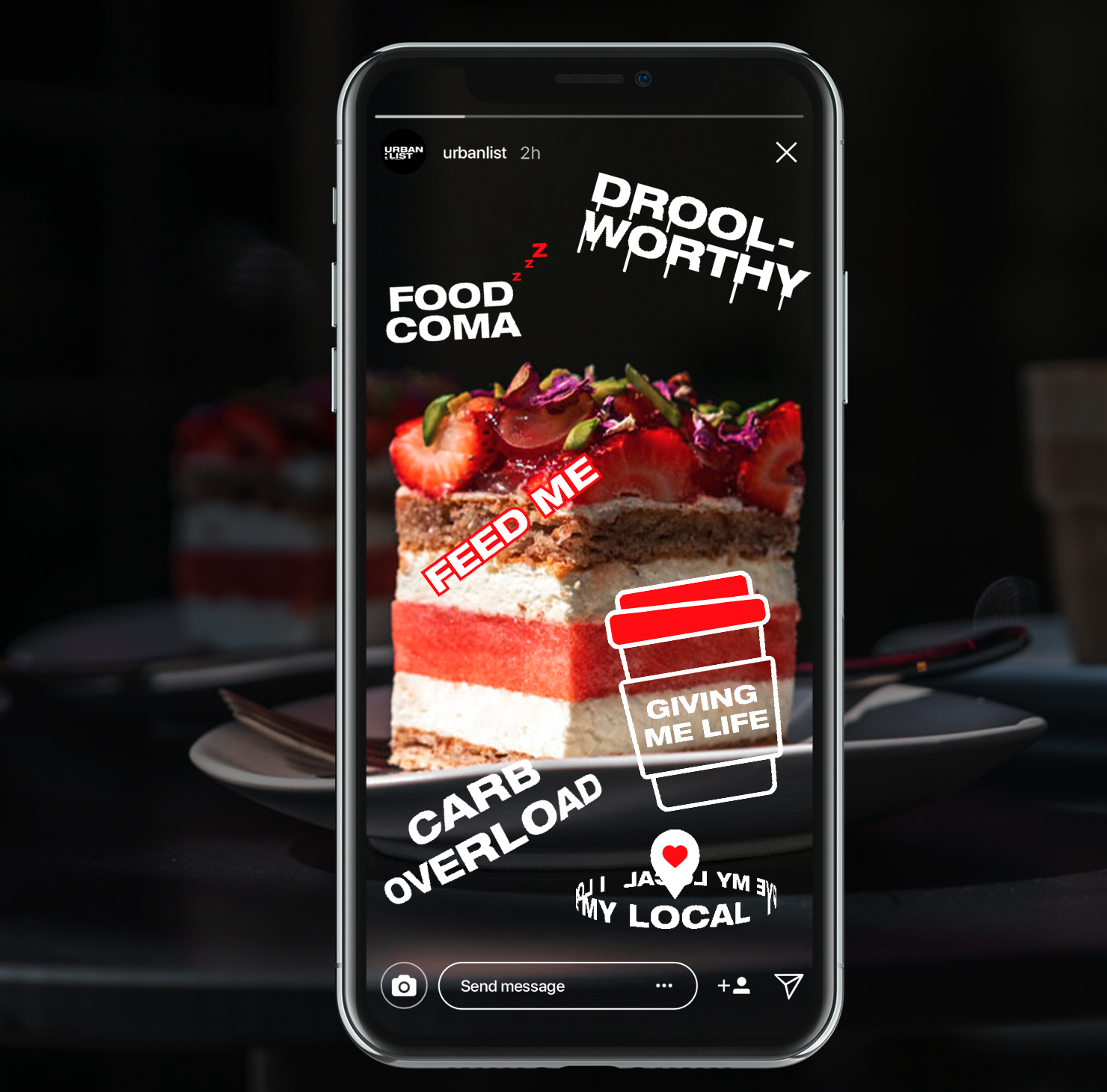
Astrotourism Is In The Stars
The world’s fascination with the celestial is not a new trend by any means. Content surrounding blood moons, super moons or where to watch Australia’s next meteor shower have always tracked well across U:L.
The environmental impact of COVID-19 has meant an outpour of images that visually prove the dramatic effect this has had on cities, many showing less air pollution since lockdown restrictions were put in place. This aspect (ideal atmospheric conditions for stargazing) crossed with people’s growing desire to get off the grid and detox digitally and the world’s next shift into travelling locally as we recover from the pandemic, puts Astrotourism at the forefront of travel trends.
There has also been an influx of parks across the world trying to register themselves as Dark Sky Parks (publicly or privately-owned spaces that have exceptional conditions for starry nights), the International Development Association reports this number to be five times higher than it was eight years ago. And the popular stargazing app, Skyview has also been downloaded more than 27 million times since it launches back in 2011.
As for how we see this reflected in brands right now, our favourite demonstration of this has been Chile Tourism’s latest online campaign. Titled “I Dream Of Chile”, the campaign frames Chile as an “astrotourism capital” in which the skies are dark enough to see colourful star clusters, nebulae, the Milky Way, and the nearest galaxies just with the naked eye.
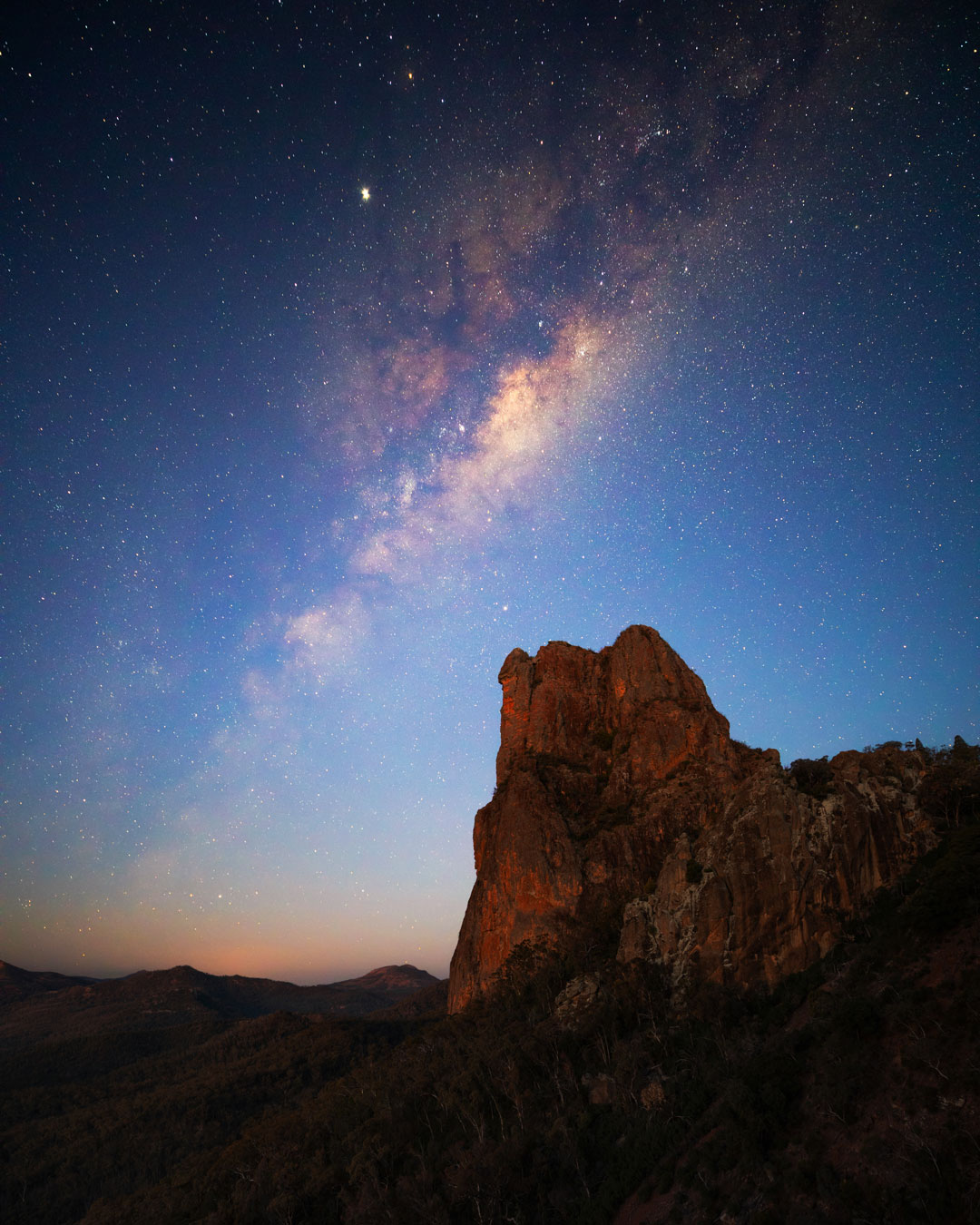
What’s The Deal With Dopamine Fasting
This one has its origins in Silicon Valley. It popped up on our radar in November 2019—coined by Youtuber Improvement Phil, dopamine fasting is the practice of refraining from all pleasurable things for 24-hours (like food, sex, video games, shopping, social media, street food, exercise, eye contact—even small talk if that gives you a buzz). The result, supposedly, is a more sustained release of endorphins—a sort of “absence makes the heart grow fonder” philosophy for people who have numbed out on a little too much of everything, all the time, with no breaks.
It’s the antithesis to the attention economy and obsessive busyness and, as The New York Times puts it, “How to feel nothing now, to feel more later.” And while Vox says it’s pseudo-science (it kind of is), and it zipped out of the cultural conscience for a moment as 2020’s catastrophic events rolled on—this wellness trend has actually found a little bit of relevance in the era of social isolation.
While we are social distancing—at least in the Australian context, doing a whole lot less socialising than what we used to—the concept of really leaning into the space, the quiet and your boredom in order to really appreciate everything around you doesn’t actually sound so bad. We can’t back the science in dopamine fasting, and it is a little drastic and a privileged practice only available to those who can switch off work, kids, family, life—but if the race has slowed down a whole lot, maybe it’s time to appreciate the scenery a little.
On The Slide
The 5 Day Working Week Takes A Hit, But Do We Really Need It?
If there’s one thing that’s been a spanner in the works due to COVID-19, it’s been the concept of the five-day working week (plus all the workplace trends of the current generation like open-plan offices and hot-desking). Industries have come to a complete standstill, and businesses that have been able to survive during this time have been forced to make dramatic changes to how their employees work—with working from home being the new way of life for office workers around the world.
While businesses try to cost-save their losses by reducing the number of working hours for their employees and reconsidering leases on rented workspaces, more flexible work arrangements have evolved to keep productivity and business viability at a high in the wake of this pandemic. While flexible working conditions were steadily on the rise prior to COVID-19, and restrictions were more so an acceleration on the inevitable—the realisation that, for the majority of industries, many work tasks can be done at home. The decline of the viability of the five-day working week in 2020 we’ve heard New Zealand’s Prime Minister Jacinda Ardern, talk much about the idea of a four-day workweek to do just this. In doing so, this work model could essentially restore some balance and stimulate tourism and the economy for some return to normalcy.
Traditional Classrooms—School’s Out
Welcome to the new age of online learning. This shift in educational gears has been whispered for a while now, thanks to the ocean of educational resources on YouTube that have built up over the last decade—which have more recently been smartened up and monetised by slick programming like Masterclass, and catapulted via sheer necessity thanks to the pandemic.
Alongside existing players offering free classes for quarantine (LinkedIn, Fender) brands not typically based in education are buying in too—Nike's "You Can't Stop Us" wellness sessions, for example, have earned the iconic brand new credibility in the mental health and wellness space, beyond its sports and streetwear foundations. MoMA's art history classes, hosted for free via Coursera, gave the New York City museum global reach while its doors and exhibitions were closed. All of this has granted us a fresh fervour for learning as well as making education, for the first time, less of an elitist institution, limited by classroom space.
So many questions arise here: How will universities and earlier education systems adopt and adapt? What will universities look like in the future and who will they be for? Will online learning ultimately underscore the sinking relevance of a university degree and the big business of Australian universities?
Calm Content vs Brand Noise
In a previous Culture Curve, pulled together during the first weeks of COVID-19, we looked at the rise of “positive publishing” and the decline of high maintenance beauty. Both of these respective trends encapsulated a wider culture, which is still relevant now, and even more so because of the pandemic. It’s one that transfers online to embody a “simple life”, hyper-femininity, dreamy landscapes, youth, Y2K vibes, baby animals, glitter, and overall—positivity.
We see this in the internet phenomenon dubbed the “soothing content economy”. This forks out into an online abyss of people wanting to cleanse their timelines (usually packed with heavy news-related stories or fierce branded content) to disrupt their feeds by following accounts that will break up the intense scroll with pictures of llamas and alpacas, babies, baking, pink hues and clouds. We also see this trend extend its impact in the way of the “soft girl aesthetic” (which is almost a happy medium between the demised impact of the VSCO Girl and E Girl), a vibe which rests on subtle energies, anime fan culture and just generally a retrograde time reminiscent of the noughties. We’ve also seen this subculture shine throughout the rise of the “cottage core” hashtag since COVID-19 started, an online mood board which stems from movements like "farm core" and "fairie [sic] core", which generally celebrate a reductive way of farm life (before big industries boomed) and content spans foraging and flower pressing tutorials, baking, pottery and a general appreciation for the simple things in life.
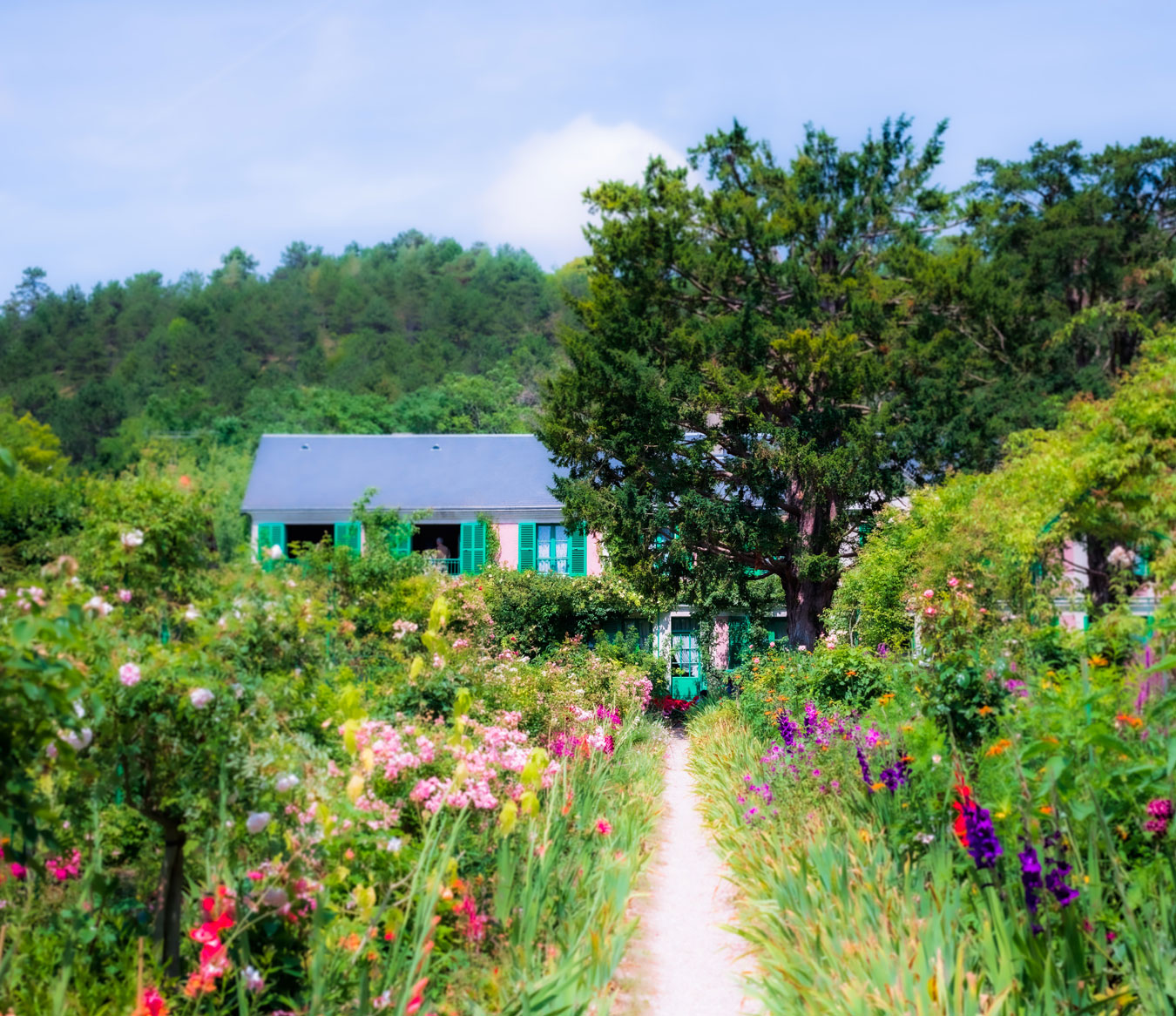
All of these trends combined convey huge leaps for the soothing content economy, a system that is not ruled or dominated by excessive brand noise but rather one that brands can jump onto in a way that compliments the sensitivities of now. One brand that has really led the way in this aspect, has been Glossier, which now defines itself on Instagram as “ a people-powered beauty ecosystem”. Glossier has dramatically shifted the type of content it shares throughout this pandemic with its social strategy having turned down its brandy-heavy posts and upped the ante on baby goats, soft clouds and of course, Animal Crossing.
Stay up to date and in the know of all things urban culture, right here.
Design credit: Kate Mason Image credit: Aesop, Destination NSW, 2SomeTravel
